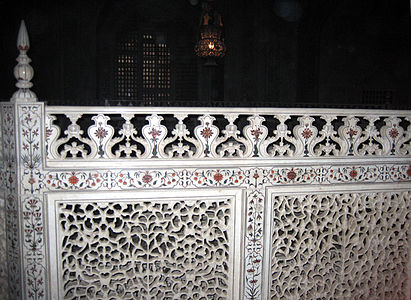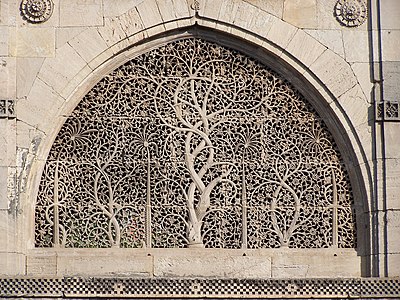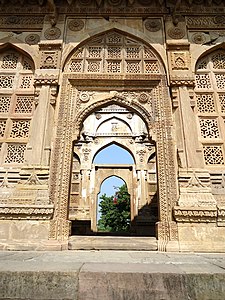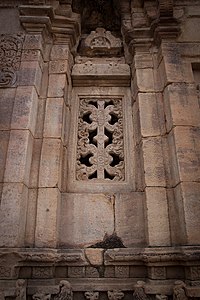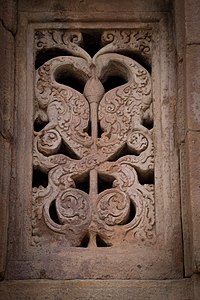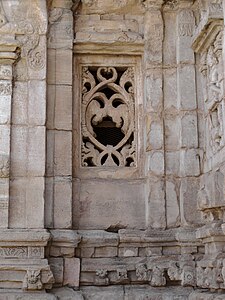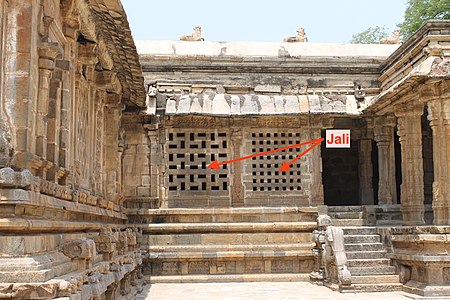Jali

A jali or jaali, (jālī, meaning "net") is the term for a perforated stone or latticed screen, usually with an ornamental pattern constructed through the use of calligraphy and geometry. This form of architectural decoration is common in Indo-Islamic architecture and more generally in Islamic architecture.[1]
The jali helps in lowering the temperature by compressing the air through the holes. Also when the air passes through these openings, its velocity increases giving profound diffusion.[clarification needed] It has been observed that humid areas like Kerala and Konkan have larger holes with overall lower opacity than compared with the dry climate regions of Gujarat and Rajasthan.[2]
With compactness of the residential areas in the modern India, jalis became less frequent for privacy and security matters.[3]
History
Early jali work was built by carving into stone, generally in geometric patterns, while later the Mughals used very finely carved plant-based designs, as at the Taj Mahal. They also often added pietra dura inlay to the surrounds, using marble and semi-precious stones.[1][4]
See also
Illustrations
-
Jali in Sidi Saiyyed mosque in Ahmedabad exhibiting traditional Indian tree of life motif
-
Jali at Tomb of Salim Chishti, Fatehpur Sikri shows Islamic geometric patterns developed in western asia
-
Jali at Bibi Ka Maqbara, Aurangabad with typical Indian motifs
-
Jali at Champaner utilize traditional indian geometric patterns and Islamic geometry
-
Pattadakal window
-
another window at Pattadakal
-
Pattadakal Virupaksa temple window
-
Chola temple
Notes
- ^ a b Lerner, p. 156
- ^ "Yatin Pandya on 'jaali' as a traditional element". Daily News and Analysis. 16 October 2011. Retrieved 18 January 2016.
- ^ Satyaprakash Varanashi (30 January 2011). "The multi-functional jaali". The Hindu. Retrieved 18 January 2016.
- ^ Thapar, Bindia (2004). Introduction to Indian architecture. Singapore: Tuttle Publishing. p. 81. ISBN 9781462906420.
References
- Lerner, Martin (ed), The Flame and the Lotus: Indian and Southeast Asian Art from the Kronos Collections, an exhibition catalog from The Metropolitan Museum of Art (fully available online as PDF), which contains material on Jali (no. 60), google books

